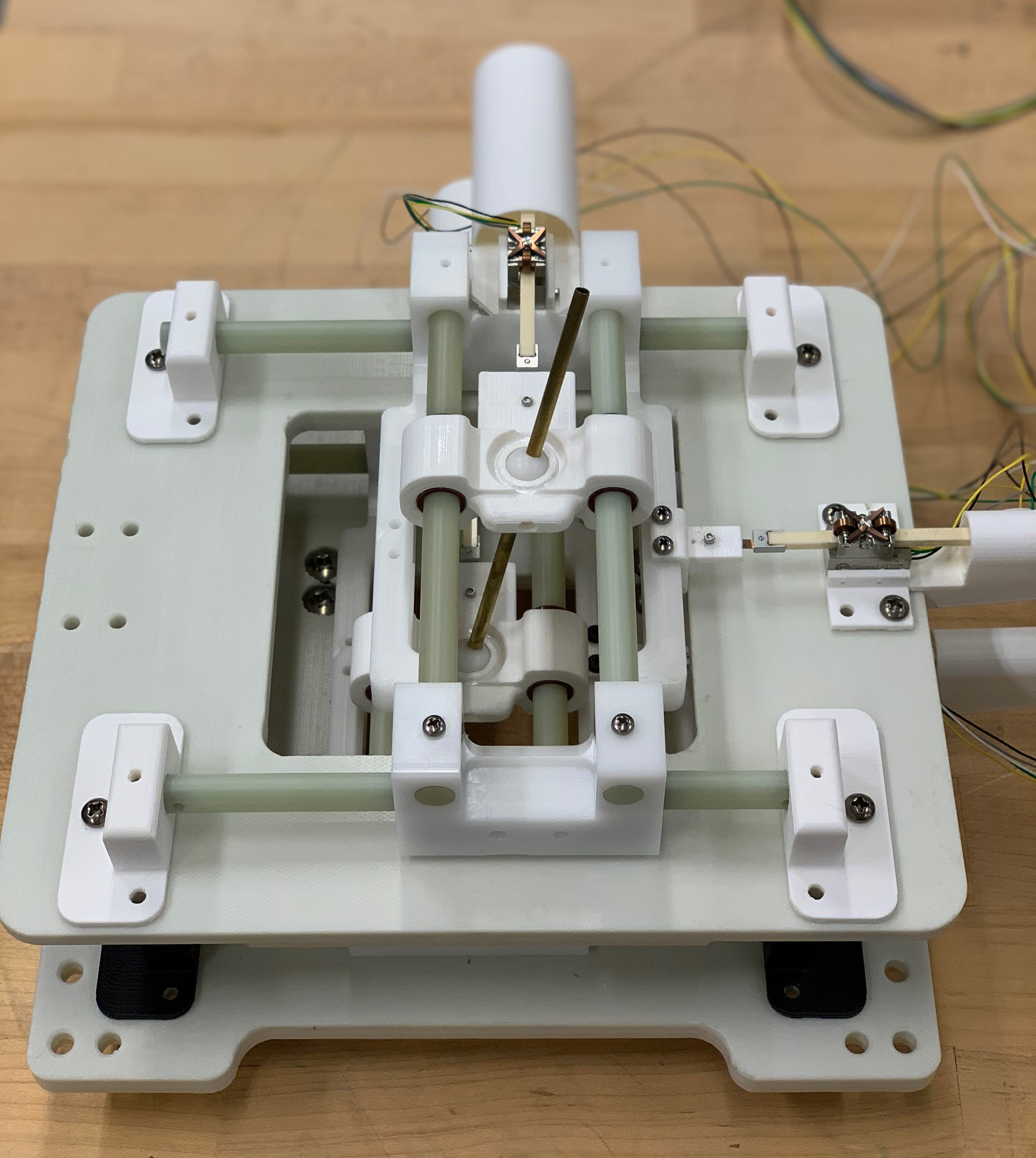Inventors at Georgia Tech and Emory have developed an MRI compatible robotic needle positioning system to improve both the speed and accuracy of the injection procedure. The robot uses linear piezoelectric motors to directly drive a parallel plane positioning mechanism. Feedback is provided through MRI images taken during the orientation procedure. This system is found to be capable of orienting a needle endpoint to within 14 microns of a desired position. The robot is also found to be fully MRI compatible. The high accuracy of this needle positioning robot and visual feedback method will result in a significant improvement to the workflow of spinal injection procedures.
- Increased accuracy — robot capable of less than 100 micron accuracy
- Increased speed — faster targeting of injection locations
- Therapeutic delivery to the spinal cord
- MRI guided intraspinal injection
Recent developments in the field of cellular therapeutics have indicated the potential of stem cell injections directly to the spinal cord. This injection procedure allows for direct delivery of cellular therapeutics, avoiding the need for diffusion. The targeted area is very small, with a narrow trajectory necessary to avoid vertebrae and other sensitive tissues. The current procedure involves either open surgery or a Magnetic Resonance Imaging (MRI) based minimally invasive version. The minimally invasive MRI based procedure is preferable to mitigate the damage that occurs during open surgery. However, needle positioning during MRI imaging remains a significant hurdle.

